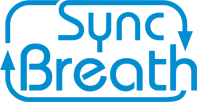Diaphragmatic breathing
Instead of going through every stage of the 3-part breathing technique, I can repeat only the first stage, predominantly engaging my diaphragm. The diaphragm flattens when it gets to maximum amplitude after I finish inhaling. It returns to its neutral dome shape when I complete the exhaling.
Yogis claim we ‘reside’ deep down in the bottom of the lungs, and those who breathe shallowly avoid getting in touch with themselves.
So, I practice a breathing method that focuses on the bottom of my lungs. I do that by using my diaphragm muscles to the maximum amplitude.
A trained and toned diaphragm muscle which can expand in 360⁰ is like a well-tuned engine. When engaged, the bottom parts of my lungs flood with air; this is where I have the most efficient gas exchange. When my diaphragm expands only forward and not backward, the result is limited ‘flap diaphragmatic breathing.’ When it expands in 360⁰, I breathe fully diaphragmatically.
My abdominal muscles are relaxed and minimally engaged when I breathe diaphragmatically. The main advantages of breathing predominantly with my diaphragm are:
- I move air down to the most absorption-efficient area in my lungs.
- Send signals of relaxation to my ‘breathing app.’
- Massage some of my vital organs.
- Encourage bowel movement.
- Reduce the chance of expelling too much Carbon-diOxide from my bloodstream compared to 3-part-breathing.
